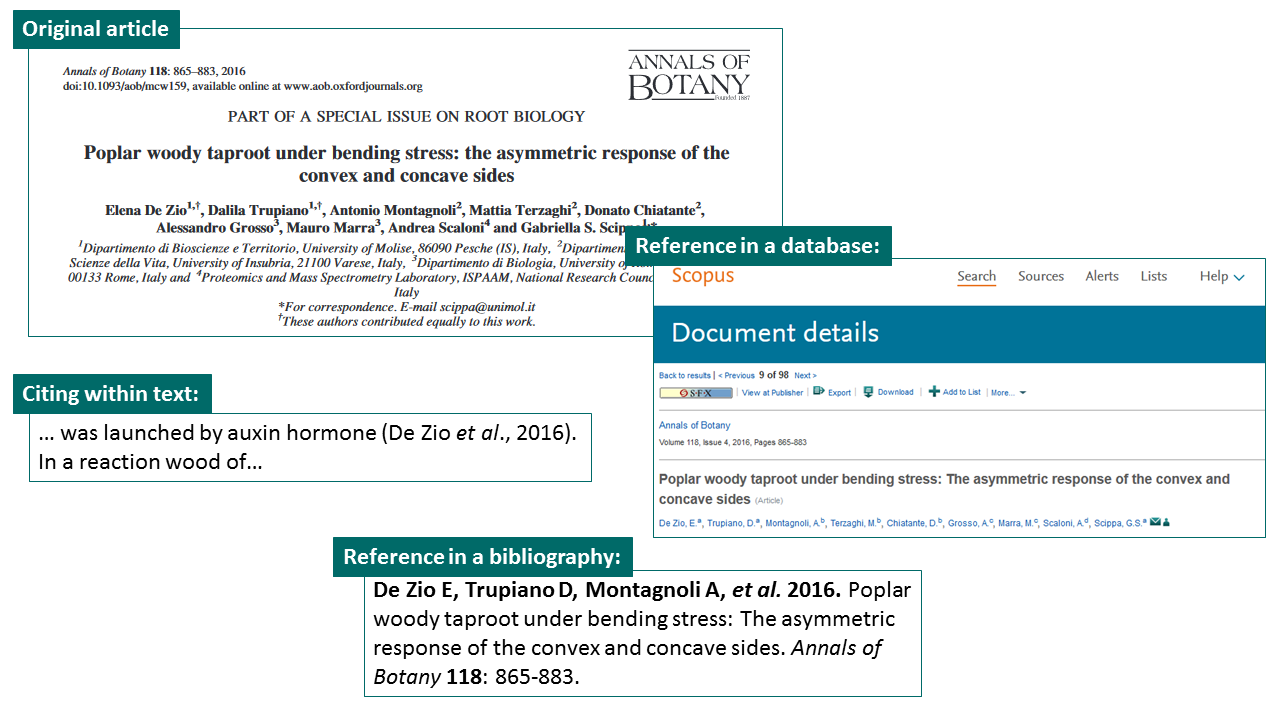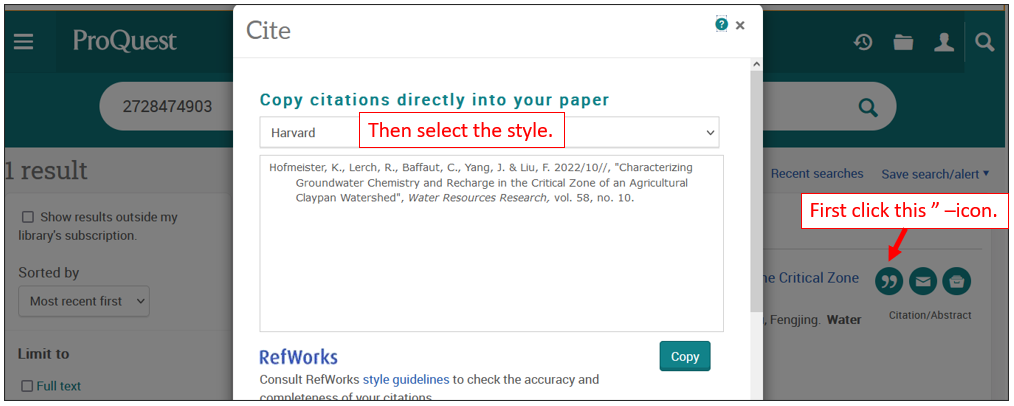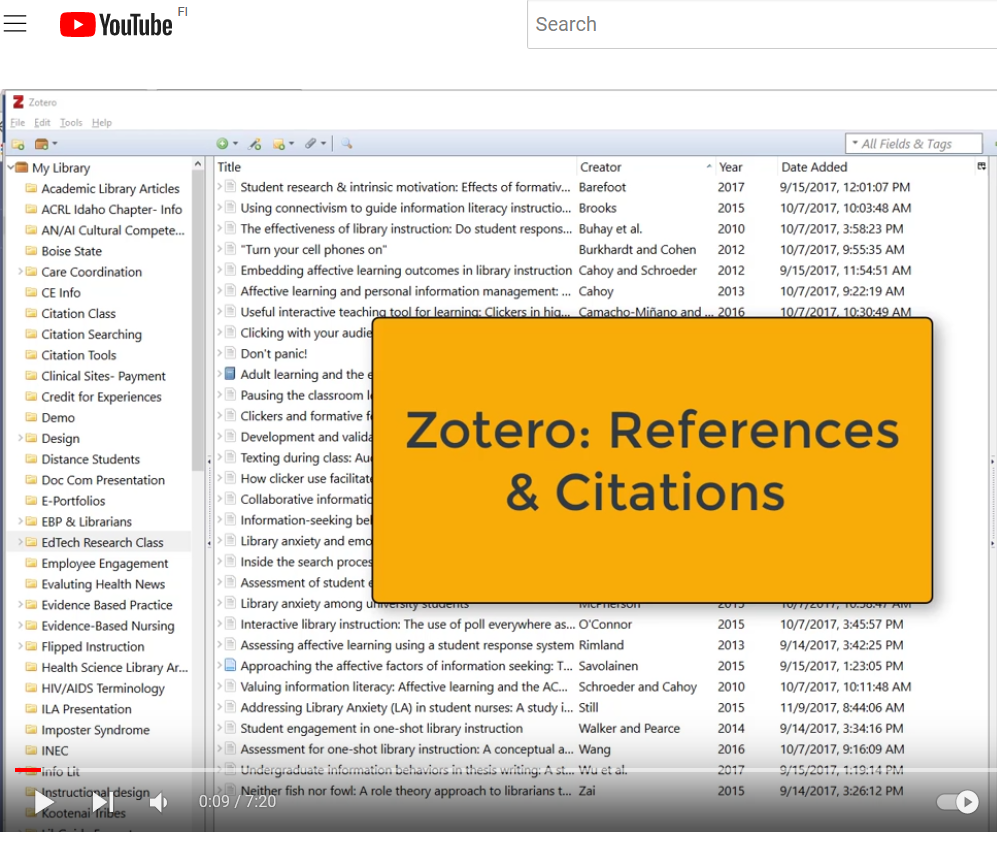Citing
The scientific work requires knowledge and a connection to former research. So utilising other people’s work is not only admissible but essential. Still, the author of an article, chart, picture or invention always has a copyright to his/her work and must be mentioned and credited in a proper way. This is called citing.
Citing is crediting
The citing is done in a very formal way. This has two purposes.
- To separate the other people’s ideas from your own brain work (=citing within the text).
- To give sufficient information about the publications used, so that everyone can locate the original paper (=the bibliography or reference list of publications mentioned in a text).
See a video by David Taylor (3:13):
Citing requires the metadata
The citation always has some permanent key elements that must be included in the reference list (i.e. bibliography).
The references in databases contain the same elements of identifying and locating the publications: Author, year, title, journal name etc. = Metadata

TIP: Many databases (e.g. Scopus, ProQuest, UEF Primo) provide a tool for formulating a ready-made citation for a reference list. It might be called “Cite” or “Create bibliography”.
There are different citation styles available among you can choose, like Harvard or Chicago:

Also, a reference management program can be used as a tool for citing, even for within-text citations. See a video (7:20) by Idaho State University Library, how this is done in Zotero program:

To Do:
- Clearly indicate which ideas in your text are someone else’s.
- Compile the references list according the rules and style given. You can use some ready-made tools for that.
This is the last page. Return to home page.